As we move into 2025, the increasing demand for reliable tobacco smoke detector solutions reflects growing concerns about indoor air quality and public health. This comprehensive handbook is designed to be your essential step-by-step resource for selecting, installing, and maintaining a tobacco smoke detector in any environment.
Tobacco smoke exposure remains a significant risk, but new detection technology can help prevent harm before it starts. In this guide, you will explore the latest innovations, learn how to choose the ideal system, follow practical installation advice, master ongoing maintenance, understand legal responsibilities, and discover future trends shaping safer spaces.
The Importance of Tobacco Smoke Detection in 2025
The need for effective tobacco smoke detector solutions is higher than ever in 2025. With increased awareness of indoor air quality, organisations and homeowners are seeking proactive ways to safeguard health and comply with evolving standards. Understanding why a tobacco smoke detector matters today is essential for making informed choices in any setting.

Growing Health Risks of Tobacco Smoke Exposure
Recent studies highlight a troubling rise in passive smoke-related illnesses in the UK and around the world. The NHS reports that secondhand smoke causes thousands of preventable deaths annually, while the World Health Organization links it to increased risks of heart disease, lung cancer, and respiratory infections.
In 2025, there is greater recognition of how quickly tobacco smoke can compromise indoor air quality. Public and private spaces, such as schools, offices, and multi-unit housing, have seen incidents where undetected tobacco smoke led to health complaints and even emergency evacuations. Installing a tobacco smoke detector in these environments is now seen as a critical step to protect vulnerable groups, including children and those with pre-existing conditions.
Communities are responding by demanding cleaner air and timely alerts. This shift is driving the adoption of tobacco smoke detector technology in more settings than ever before.
Regulatory and Compliance Drivers
Legal requirements have become more stringent in 2025. The UK and EU have introduced updated regulations mandating smoke-free environments in public buildings, workplaces, and rental properties. Failure to install a compliant tobacco smoke detector can result in substantial fines, legal liabilities, and, in severe cases, closure of business premises.
Recent enforcement actions demonstrate the consequences for organisations that overlook their obligations. For example, several schools and hospitality venues have faced penalties for not meeting detection standards. To stay informed about the latest compliance rules, it is essential to review resources like Compliance and legal requirements for smoke detection, which outlines specific UK laws and responsibilities for 2025.
Organisations are now taking a proactive approach, integrating tobacco smoke detector systems to avoid costly repercussions and ensure occupant safety.
Evolving Public Expectations
Societal attitudes towards indoor smoking have shifted dramatically. Data suggests that a majority of employees and residents now expect smoke-free environments and reliable air quality monitoring. Public venues, such as cinemas and restaurants, are responding to these expectations by investing in advanced tobacco smoke detector technologies.
Employers are also recognising their duty of care, with many making tobacco smoke detector installation part of their health and safety policies. This move is not only about compliance but also about demonstrating social responsibility and building trust with staff and visitors.
Adopting modern detection solutions sends a clear message: clean air is a priority, and every effort is being made to maintain a healthy indoor environment.
The Rise of Advanced Detection Technologies
Traditional smoke alarms, while useful, are often insufficient for detecting the unique particulates and chemicals found in tobacco smoke. Modern tobacco smoke detector systems leverage cutting-edge sensor technology to provide faster, more accurate alerts and reduce false alarms.
Recent advancements include smart detectors with real-time monitoring, wireless connectivity, and integration with building management systems. Market data shows a steady increase in the adoption of these systems, especially in education, healthcare, and hospitality sectors.
The table below summarises key differences between traditional and modern detectors:
| Feature | Traditional Alarms | Tobacco Smoke Detector |
|---|---|---|
| Sensitivity to tobacco smoke | Low | High |
| False alarm rate | Higher | Lower |
| Smart connectivity | No | Yes |
| Compliance with 2025 standards | Sometimes | Always |
Investing in a tobacco smoke detector is now seen as a strategic decision, aligning with health objectives, regulatory requirements, and public demand.
How Tobacco Smoke Detectors Work: Technology Explained
Understanding how a tobacco smoke detector functions is essential for making an informed choice. Modern systems are far more sophisticated than basic smoke alarms, using advanced sensors and smart features to identify tobacco smoke quickly and accurately. Let us break down the core technologies and innovations that set these devices apart.
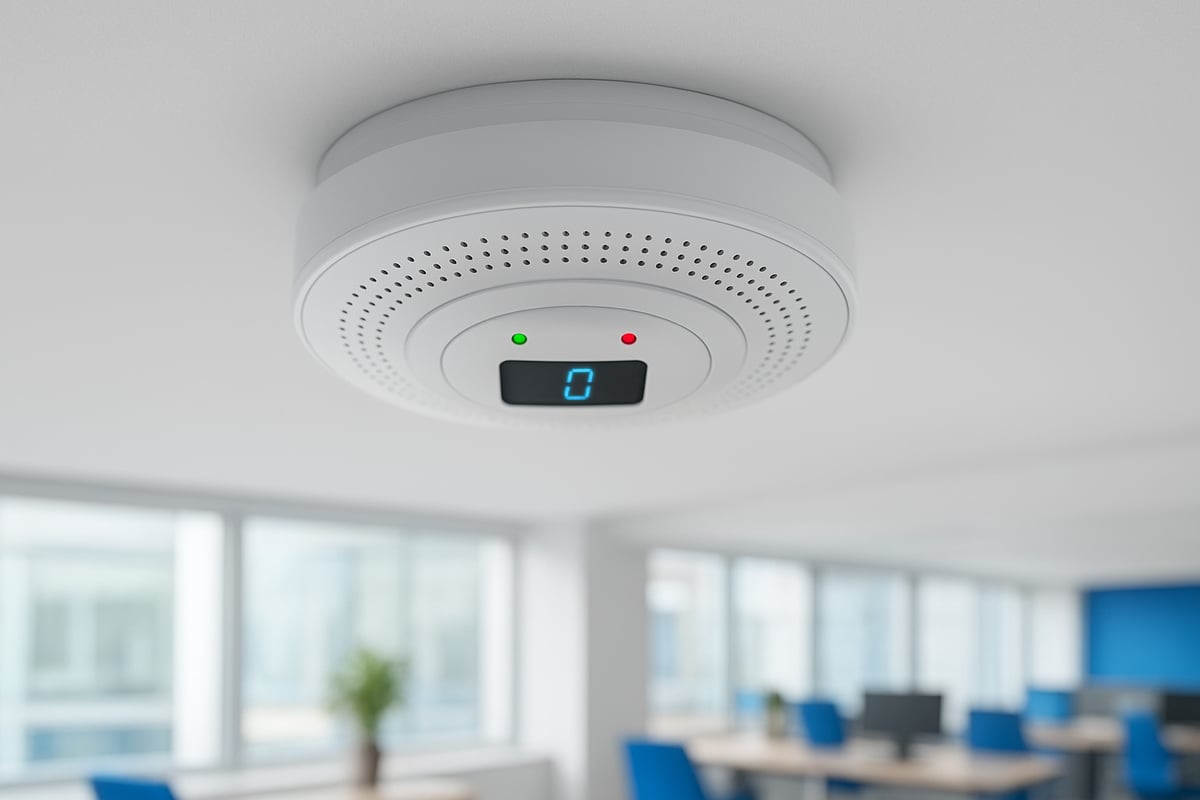
Sensor Types and Detection Methods
At the heart of any tobacco smoke detector are its sensors. These typically include particulate sensors, chemical sensors, and optical sensors, each designed to detect specific elements of tobacco smoke. Particulate sensors measure tiny particles found in cigarette smoke, while chemical sensors identify gases such as carbon monoxide and volatile organic compounds. Optical sensors use light scattering to spot smoke density changes.
Tobacco smoke differs from other types of smoke due to its unique chemical signature and particle size. This requires calibration so the detector is not triggered by cooking fumes or dust. In challenging environments, such as schools or offices, these technologies must work together for reliable performance. To learn more about the science behind these sensors, see How smart sensor technology works.
Smart Features and Connectivity
Today’s tobacco smoke detector is often equipped with smart capabilities. WiFi and Bluetooth connectivity allow for integration with building management systems, so alerts can be sent to security teams or property managers instantly. Cloud-connected detectors enable remote monitoring, letting users receive notifications on their phones or computers.
Integration with existing security or HVAC systems is now standard for many detectors. This ensures that any detection event can trigger automatic ventilation or access control responses. These smart features help create a seamless safety network across large properties, making tobacco smoke detection more proactive and efficient.
Accuracy, Sensitivity, and False Alarm Reduction
The effectiveness of a tobacco smoke detector relies on its accuracy and sensitivity. Key metrics include response time, detection threshold, and false alarm rate. High-quality detectors use adaptive algorithms that adjust sensitivity based on the environment, reducing the chance of nuisance alarms from steam or dust.
Competitor data shows that advanced models can achieve false alarm rates below 2 percent, even in busy environments. Regular calibration is important to maintain accuracy. Some detectors automatically self-calibrate, using environmental data to fine-tune their sensors. This means fewer interruptions and greater peace of mind for users.
Power, Maintenance, and Installation Considerations
When selecting a tobacco smoke detector, consider whether it is battery powered or mains powered. Battery units offer flexible placement and are ideal for retrofitting, while mains powered systems suit permanent installations and larger properties. Many detectors now feature backup batteries for added reliability.
Routine maintenance is crucial. Look for models with self-diagnosis and automatic reporting, which alert you when cleaning or servicing is required. User friendly features such as tool free battery replacement and status indicators make ongoing care straightforward. Proper installation and upkeep ensure your detector is always ready to protect your space.
Step-by-Step Guide to Choosing the Right Tobacco Smoke Detector
Choosing the right tobacco smoke detector is a crucial investment in air quality and safety for 2025. With new regulations and enhanced technology, selecting the best solution can feel overwhelming. This guide breaks down each step, helping you assess your environment, compare features, understand compliance, manage costs, and make informed purchases.
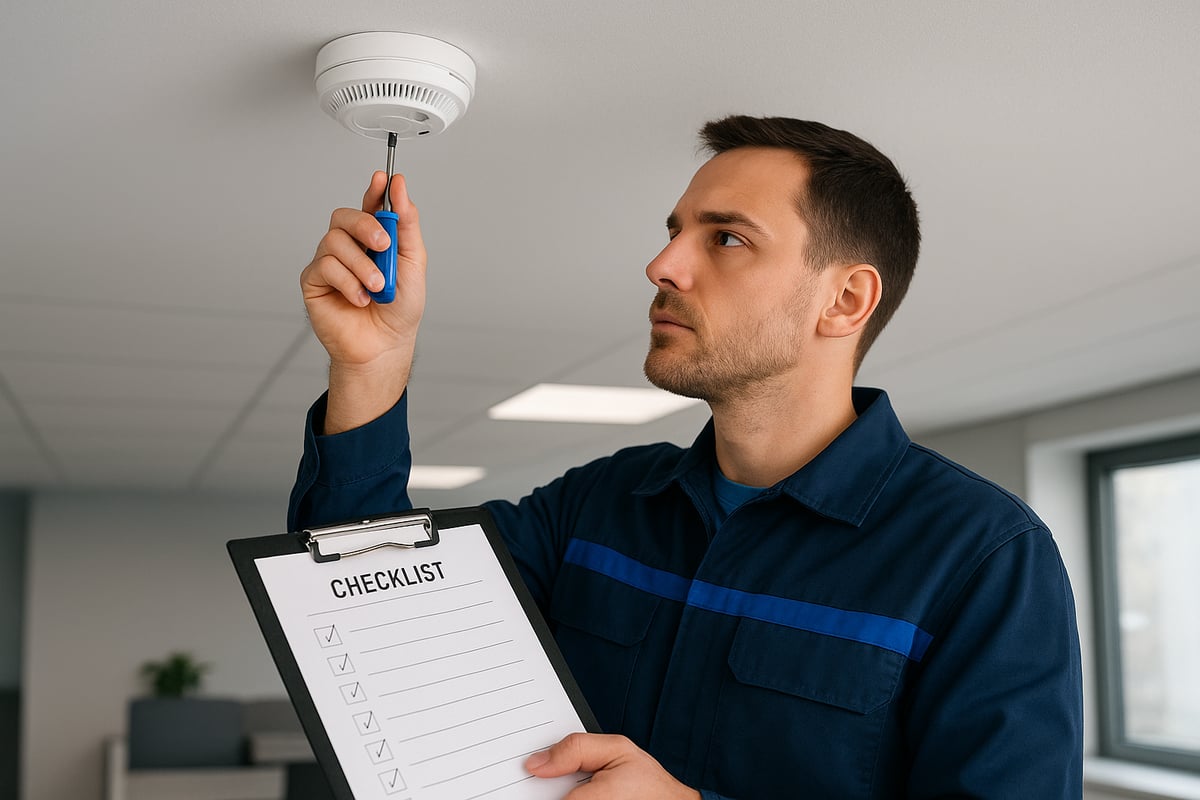
Assessing Your Environment and Risks
The first step in choosing a tobacco smoke detector is to assess where and why you need it. Consider all high-risk areas such as homes, schools, offices, hospitality venues, and healthcare facilities. Each environment brings unique challenges, from room size and ventilation to occupancy patterns.
For example, a busy office with poor airflow may require multiple units, while a school might need detectors in corridors and toilets. Evaluate the potential for tobacco smoke exposure in each area. This assessment ensures you select a tobacco smoke detector that is both effective and compliant with regulations.
- Identify all rooms where smoking or vaping could occur
- Note ventilation systems and airflow patterns
- Consider occupancy levels and hours of use
By conducting a detailed risk assessment, you lay the groundwork for a safer indoor environment.
Comparing Detector Types and Features
Once you know your risks, compare types of tobacco smoke detector systems. Standalone units are suitable for small spaces, while integrated systems connect across multiple rooms or buildings. Look for features like high sensitivity, smart connectivity, and versatile alert methods.
Here is a table comparing key features of leading detector types:
| Model Type | Sensitivity | Connectivity | Alerts | Ideal For |
|---|---|---|---|---|
| Standalone | Medium | None | Audible | Homes, single rooms |
| Smart Standalone | High | WiFi, app | App, audible | Offices, small venues |
| Integrated | High | Networked | Central panel, app | Schools, large buildings |
For a detailed comparison of leading models and their performance, see the Best vape detector and sensors guide.
When selecting a tobacco smoke detector, prioritise features that match your environment and monitoring needs.
Evaluating Certification and Compliance
Certification is non-negotiable when selecting a tobacco smoke detector. In the UK and EU, look for compliance with standards such as BS EN 54 and CE marking. Certified detectors have undergone independent testing, ensuring performance and reliability.
Third-party certification provides peace of mind that your tobacco smoke detector will respond accurately to real threats, not just steam or cooking fumes. Some compliant products also offer digital certificates or compliance reports, which are valuable for inspections.
- Check product packaging for official certification marks
- Request compliance documentation from suppliers
- Avoid products without clear evidence of independent testing
Choosing a certified tobacco smoke detector helps you meet legal obligations and avoid costly penalties.
Budget and Cost Considerations
Budgeting for a tobacco smoke detector involves more than the initial purchase price. Costs vary depending on system type, features, and installation complexity. Standalone models typically range from £50 to £150 each, while integrated smart systems may cost several hundred pounds per unit.
Consider ongoing costs such as maintenance, battery replacement, and software upgrades. Some advanced detectors offer subscription services for cloud monitoring and analytics. Balance your budget against the performance, compliance, and long-term reliability of the tobacco smoke detector you select.
- Weigh upfront costs against future savings from early detection
- Factor in maintenance and monitoring fees
- Compare warranties and support options
A well-chosen tobacco smoke detector is a cost-effective investment in health and safety.
Where to Buy and What to Avoid
Buy your tobacco smoke detector from trusted retailers or authorised distributors. Look for companies with clear product listings, certification details, and positive reviews. Avoid online listings that lack official documentation or offer suspiciously low prices.
Common pitfalls include counterfeit products, non-compliant imports, and detectors without warranty support. Always verify the supplier’s credentials and request certification before purchase.
- Purchase from recognised safety equipment retailers
- Ask for proof of compliance and certification
- Be wary of deals that seem too good to be true
Making a careful purchase ensures your tobacco smoke detector will protect your property and occupants reliably.
Installation: Step-by-Step Tobacco Smoke Detector Setup
Installing a tobacco smoke detector correctly is vital for ensuring reliable protection and compliance with regulations. A systematic approach simplifies the process, providing peace of mind and maximising the effectiveness of your investment.
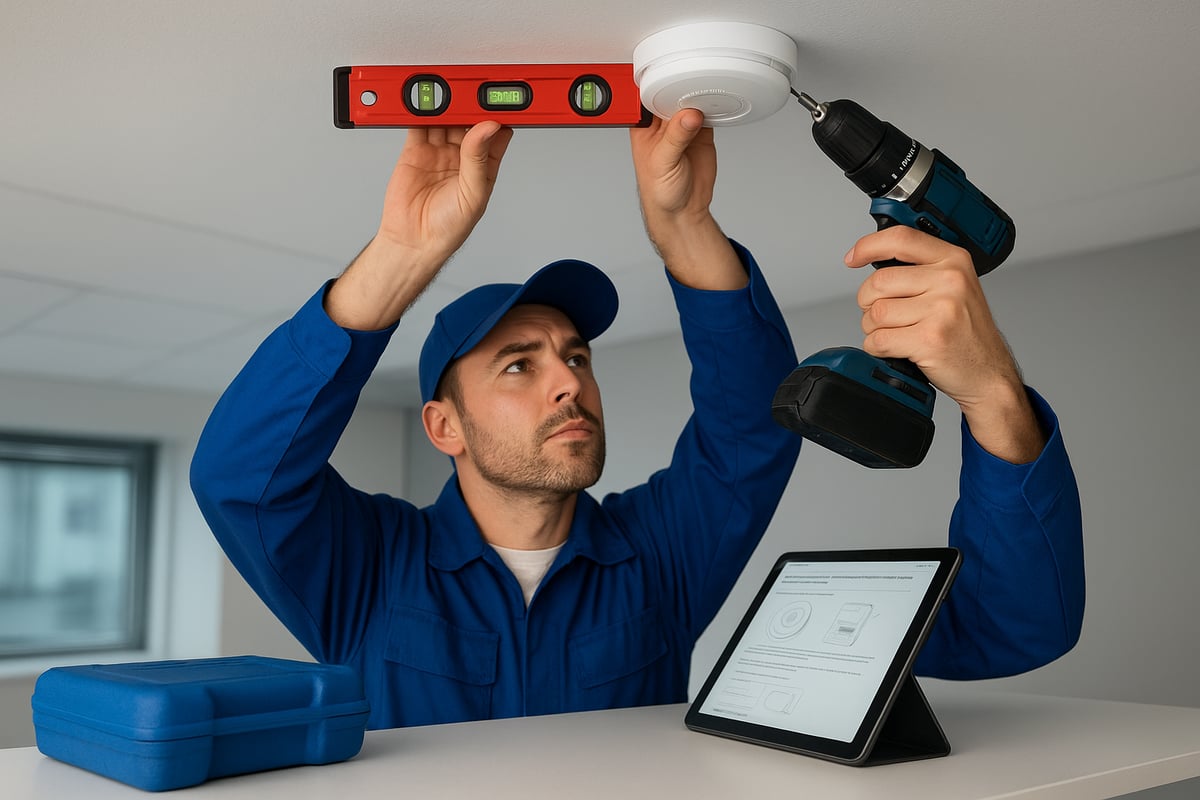
Pre-Installation Planning and Preparation
Before installing any tobacco smoke detector, assess your site carefully. Identify high risk areas such as corridors, communal spaces, or rooms with limited ventilation. Proper placement is crucial for early detection and minimising false alarms.
Create a checklist of required tools and materials:
- Screwdriver and drill
- Mounting brackets or plates
- Spirit level
- Ladder
- Power supply or batteries (as specified)
Consult manufacturer guidance to avoid common mistakes. Placing the tobacco smoke detector too close to vents, windows, or cooking areas can cause inaccurate readings. Always maintain recommended distances from obstructions and ensure clear airflow around the device.
It is essential to review the latest Fire Safety Regulations in the UK for 2025 to ensure your installation meets mandatory requirements for positioning and maintenance.
Installing the Detector
With preparations complete, start by marking the optimal spot on the ceiling or high on the wall, as smoke rises. Use a spirit level to ensure the mounting plate is straight. Secure the bracket with the appropriate screws, then attach the tobacco smoke detector according to the manufacturer's instructions.
For mains powered units, confirm that all power is off before connecting wires. If installing a smart model, download the relevant app and follow the pairing process using Bluetooth, WiFi, or other connectivity options. Many modern detectors offer step by step onscreen guidance for setup, making configuration straightforward.
Double check that the device is firmly in place and unobstructed. A correctly installed tobacco smoke detector will blend seamlessly with your space while providing maximum coverage.
Testing and Initial Calibration
After installation, conduct a thorough test to verify that your tobacco smoke detector is functioning. Press the test button to trigger an alert and confirm both sound and visual signals. If your unit is smart enabled, check that notifications are received on your device or building management system.
Adjust sensitivity settings to match your environment. For example, in areas with occasional steam or dust, a medium sensitivity may reduce false alarms without compromising safety. Document all installation details, including location, date, and calibration settings, as part of your compliance records.
Regular testing and calibration help maintain optimal performance, ensuring your tobacco smoke detector remains effective throughout its service life.
Troubleshooting Common Installation Issues
If you encounter false alarms, first check for environmental triggers such as dust, aerosols, or strong airflow. Missed detections may indicate poor placement or sensor obstruction; reposition the tobacco smoke detector if needed.
For connectivity or power issues, ensure all wiring is secure and batteries are fresh. Restart smart detectors and re pair them with your network if alerts are not being received. Most modern devices offer diagnostic features to identify common faults.
If problems persist, consult the manufacturer's support resources or engage a qualified technician. Prompt action ensures your tobacco smoke detector offers continuous, reliable protection.
Maintenance, Monitoring, and Upgrading Your Detector
Keeping your tobacco smoke detector in peak condition is essential for reliable protection and compliance. Regular attention ensures swift detection, minimises false alarms, and extends the lifespan of your investment. Here, we break down the steps to maintain, monitor, and upgrade your system with confidence.
Routine Maintenance and Cleaning
Routine maintenance is the foundation of effective tobacco smoke detector performance. Set a schedule to inspect and clean each device at least once a quarter. Use a soft brush or compressed air to remove dust and debris from sensor openings. Avoid using liquids, as moisture can damage sensitive components.
Regular cleaning helps maintain sensor accuracy and responsiveness. For areas with high footfall or ventilation, monthly checks are wise. Many modern detectors offer self-diagnosis features that alert users when maintenance is required, reducing guesswork.
Real-world data shows that consistent upkeep can double the working life of your tobacco smoke detector. For practical examples of how maintenance impacts performance, explore real-world vape detection case studies.
Monitoring Performance and Alerts
A tobacco smoke detector is only as effective as its monitoring system. Learn how to interpret alert notifications, whether audible alarms, mobile notifications, or integration with security panels. Respond promptly to all alerts, even if they seem minor, to ensure safety and compliance.
Leverage data logs and analytics to identify trends, like repeated false alarms in specific rooms. Analysing this information helps you adjust sensitivity settings or improve placement. For larger sites, connect detectors to building management systems for centralised monitoring.
Using these monitoring tools not only increases response speed but also supports a proactive approach to tobacco smoke detector maintenance.
Upgrading and Future-Proofing
Technology evolves rapidly, so periodically assess whether your tobacco smoke detector meets current standards. Signs that an upgrade is due include frequent false alarms, outdated connectivity, or inability to integrate with new systems.
In 2025, look for advanced features such as remote diagnostics, software update capability, and AI-powered detection algorithms. These upgrades enable more accurate identification of tobacco smoke and reduce maintenance headaches.
Stay informed about new models and consider future-proofing your system with modular upgrades. This ensures your tobacco smoke detector remains effective and compliant as regulations and threats change.
Legal Compliance and Documentation
Proper record keeping is vital for businesses and landlords using a tobacco smoke detector. Maintain logs of all inspections, maintenance, and alarm events. These records demonstrate due diligence during inspections or audits.
Familiarise yourself with the latest UK Smoke and Carbon Monoxide Alarm Regulations 2025 to ensure your practices align with legal obligations. Non-compliance can lead to fines or legal challenges.
By staying organised and up to date, you safeguard your property, meet regulatory requirements, and reinforce the reliability of your tobacco smoke detector system.
Legal, Ethical, and Future Considerations for Tobacco Smoke Detection
Staying ahead with tobacco smoke detector compliance in 2025 demands more than just technical know-how. Understanding the legal landscape, respecting privacy, and anticipating future changes are all vital. Below, we break down what you need to know to protect your property, reputation, and those who rely on you.
Understanding Your Legal Obligations
In 2025, UK laws require landlords, employers, and public venues to prioritise tobacco smoke detector installation. The Tobacco and Vapes Bill Overview highlights how regulatory changes are driving stricter compliance for smoke-free environments. Non-compliance can result in substantial fines, insurance claim issues, and even criminal liability in severe cases. For instance, some legal cases have resulted in business closures due to failure in smoke detection. To avoid these consequences, always ensure your tobacco smoke detector systems are certified and records are up to date.
Ethical Considerations and Privacy
Installing a tobacco smoke detector brings ethical responsibilities. Balancing safety with occupant privacy is crucial, especially as smart detectors collect more data. Employers and landlords must be transparent about how information is used, stored, and who can access it. Engaging with privacy advocacy groups and informing occupants about the purpose and limits of detection technology builds trust. Ultimately, ethical use of tobacco smoke detector systems can enhance reputation and foster a culture of responsibility within your organisation.
Future Trends in Smoke Detection
The future of tobacco smoke detector technology is rapidly evolving. Expect advancements like artificial intelligence, IoT integration, and multi-sensor platforms that distinguish between different smoke sources. Regulatory bodies are predicted to tighten standards, making data-driven air quality monitoring a public health priority. A table below summarises some trends to watch:
| Trend | Impact |
|---|---|
| AI-powered sensors | Improved accuracy |
| IoT and cloud connectivity | Real-time monitoring |
| Stricter regulations | Higher compliance requirements |
Adopting these trends early ensures your tobacco smoke detector system remains effective and compliant.
Preparing for a Smoke-Free Future
Tobacco harm reduction, changing smoking habits, and increased public health awareness are shaping a smoke-free future. Integrating your tobacco smoke detector with broader air quality solutions positions your business as a leader in health and safety. Forward-thinking organisations are already using these systems to monitor and improve indoor environments. By staying proactive, you not only comply with current laws but also prepare for further innovations and expectations in air quality management.
As we’ve explored, taking proactive steps with tobacco smoke detection in 2025 isn’t just about ticking boxes—it’s about genuinely protecting the health and wellbeing of everyone in your space. With evolving regulations, advanced technology, and growing public expectations, now is the perfect time to ensure your building is safe and compliant. If you’re ready to make a positive change or have specific questions about your environment, you don’t have to navigate the process alone. Talk to our team and protect your building today—let’s work together to create a safer, healthier future.
Talk to our team and protect your building today
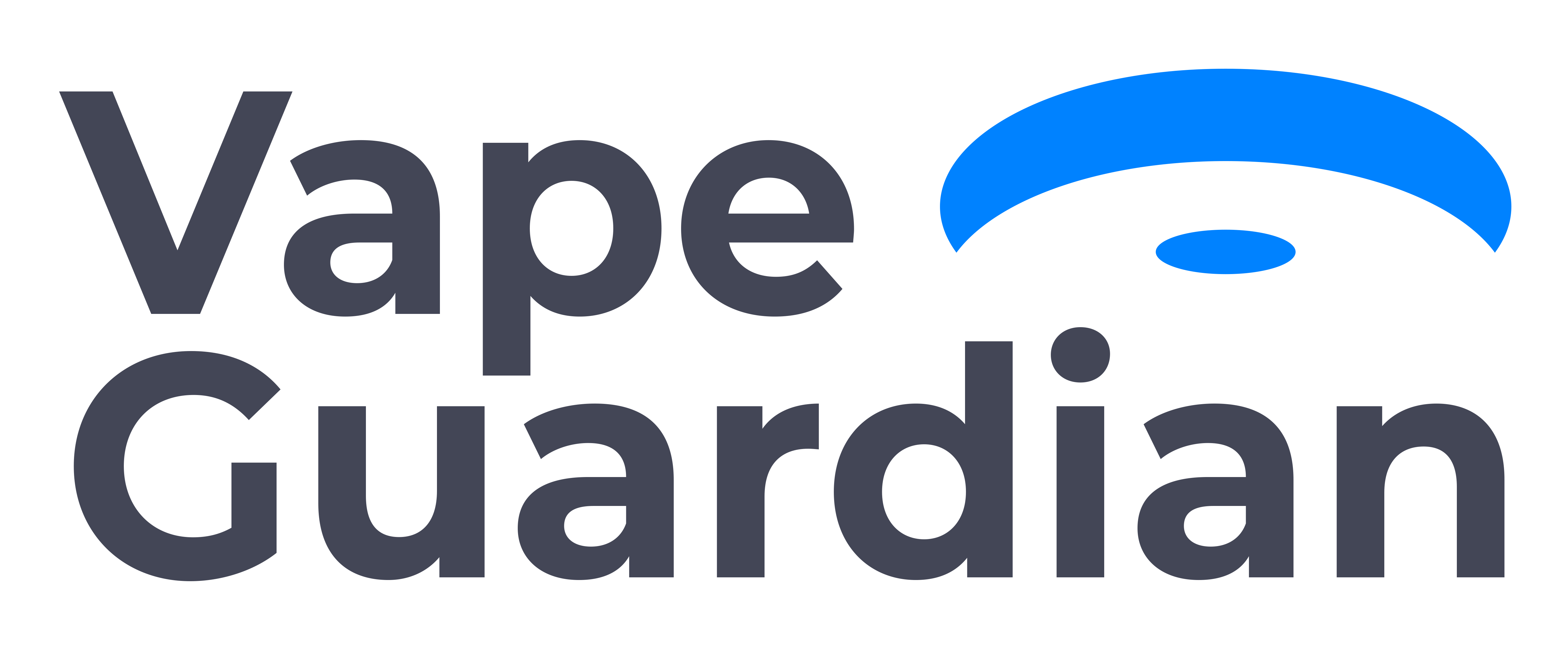
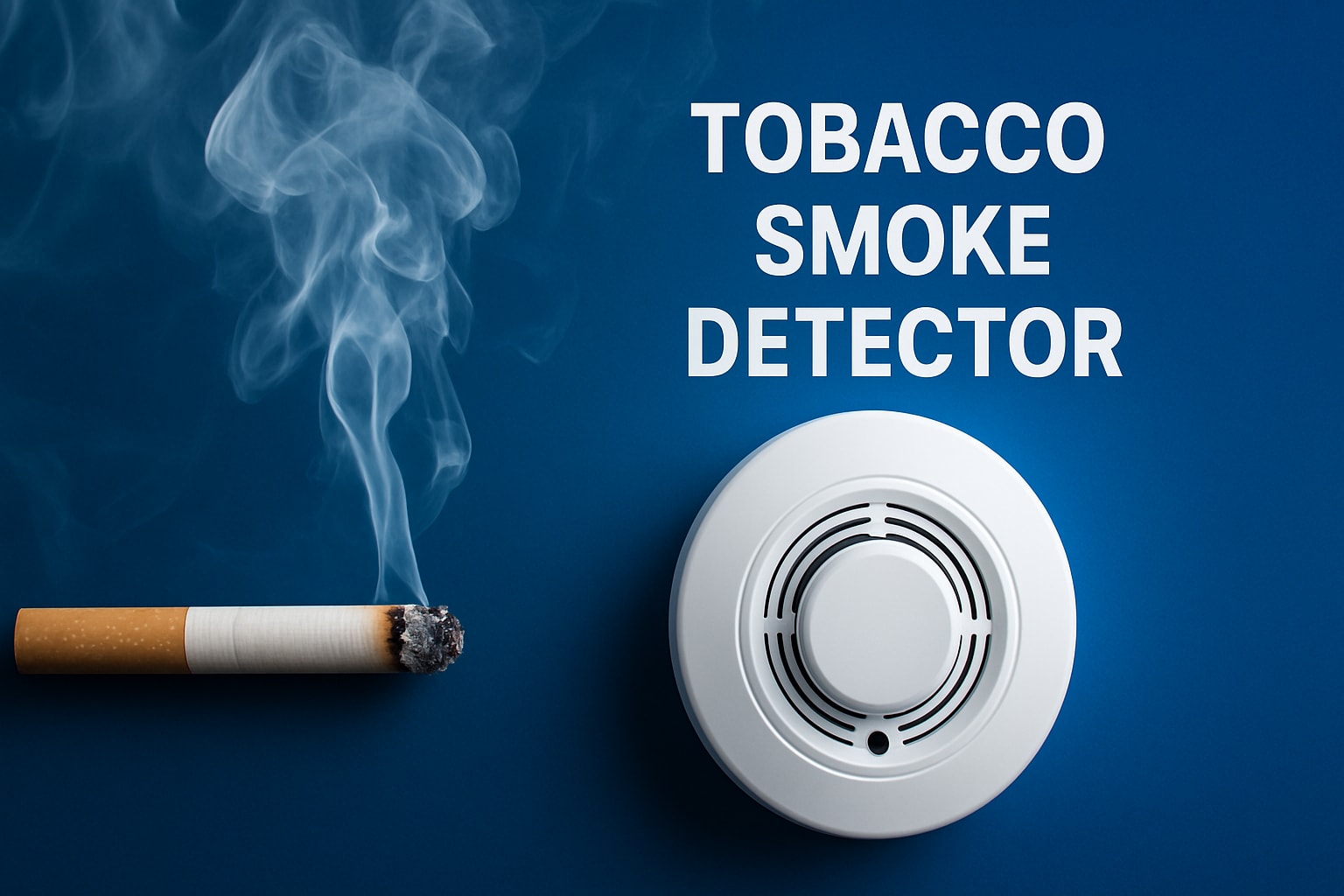
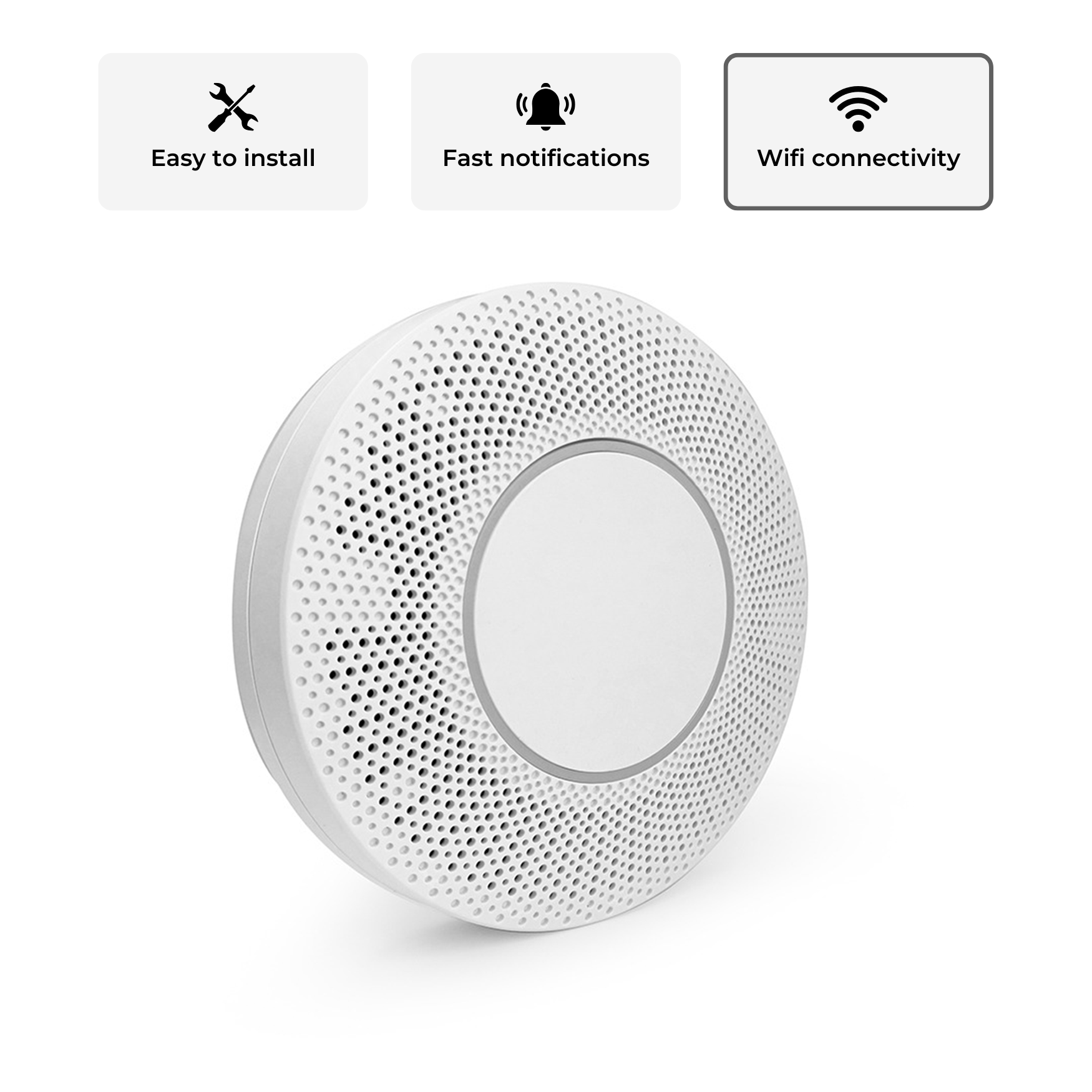
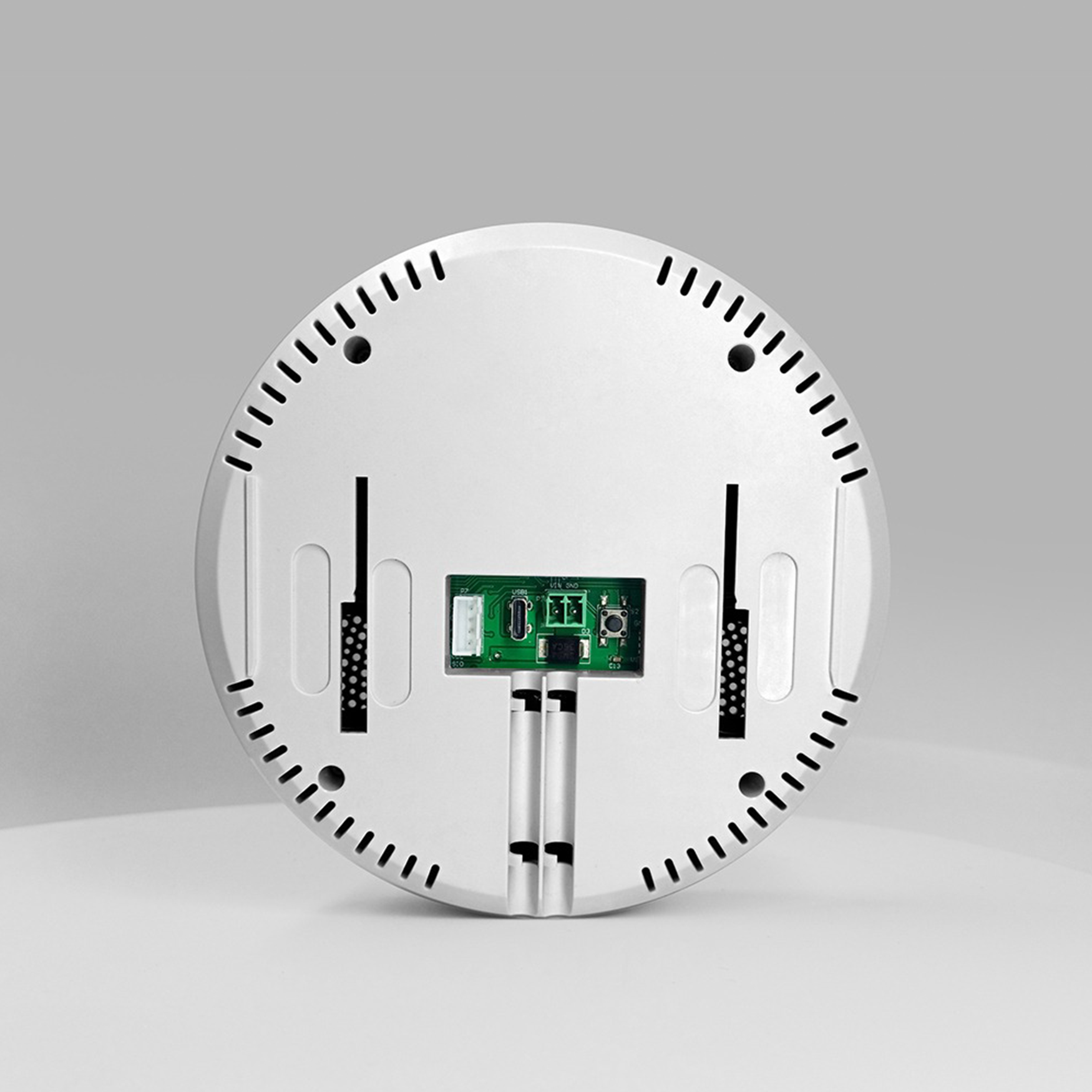

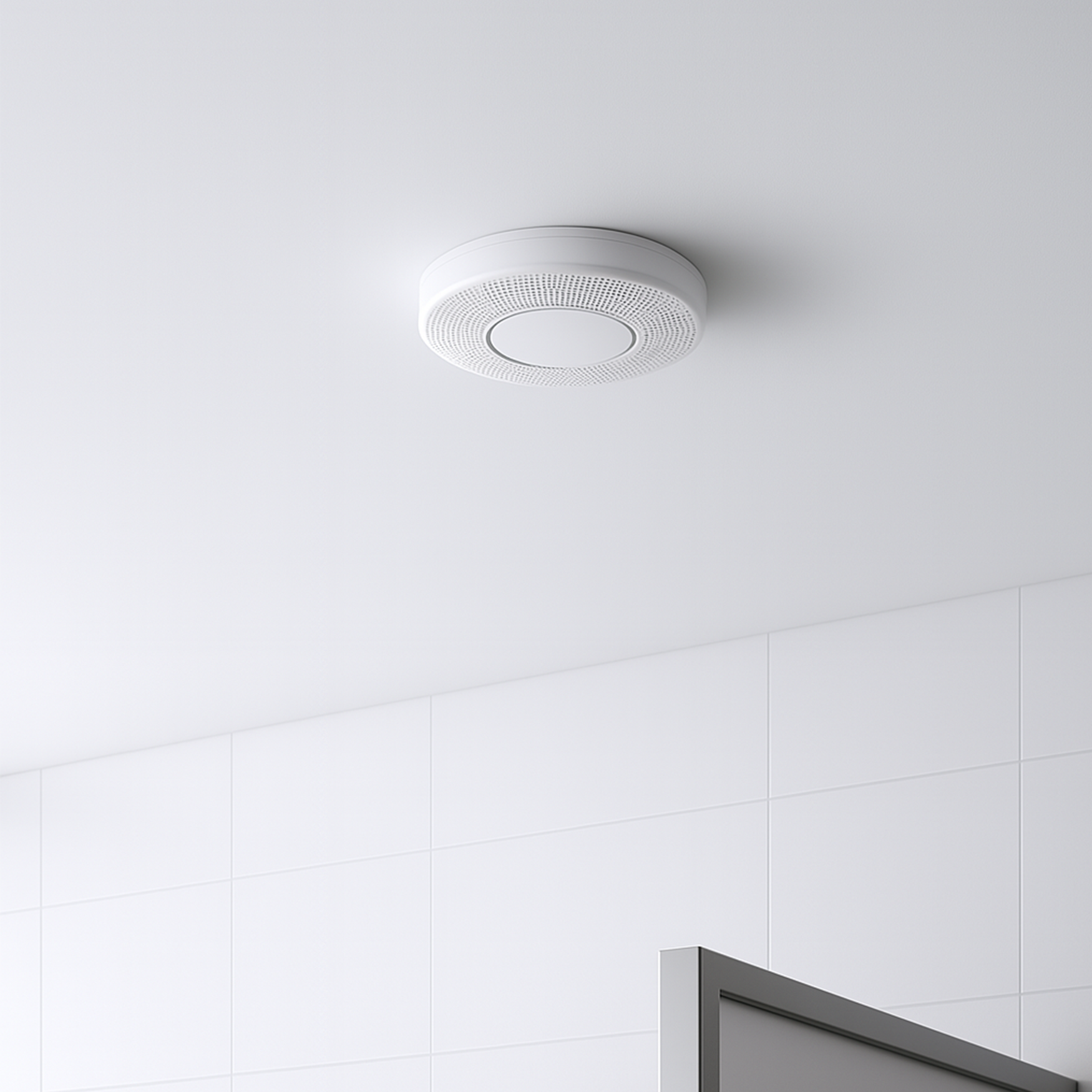
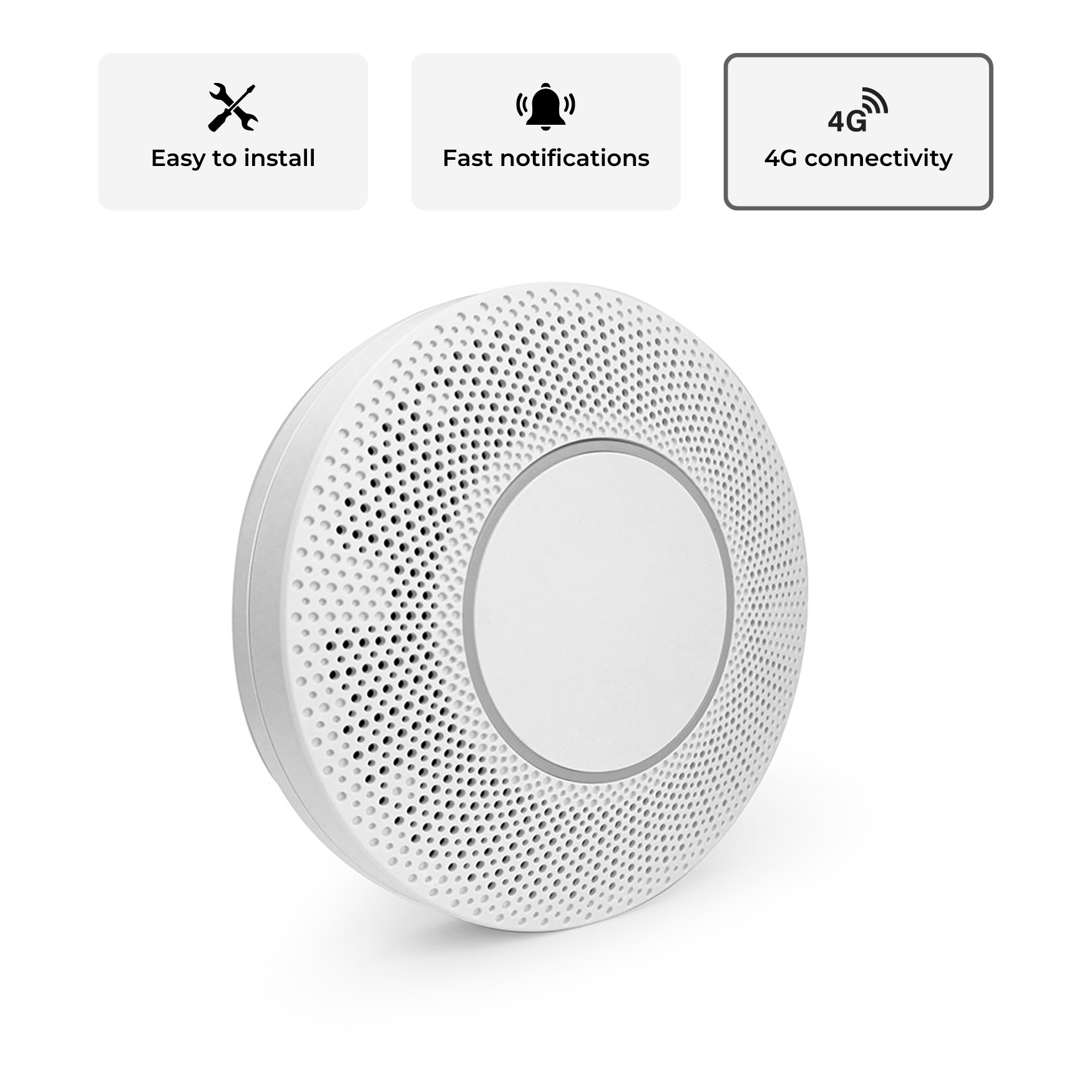
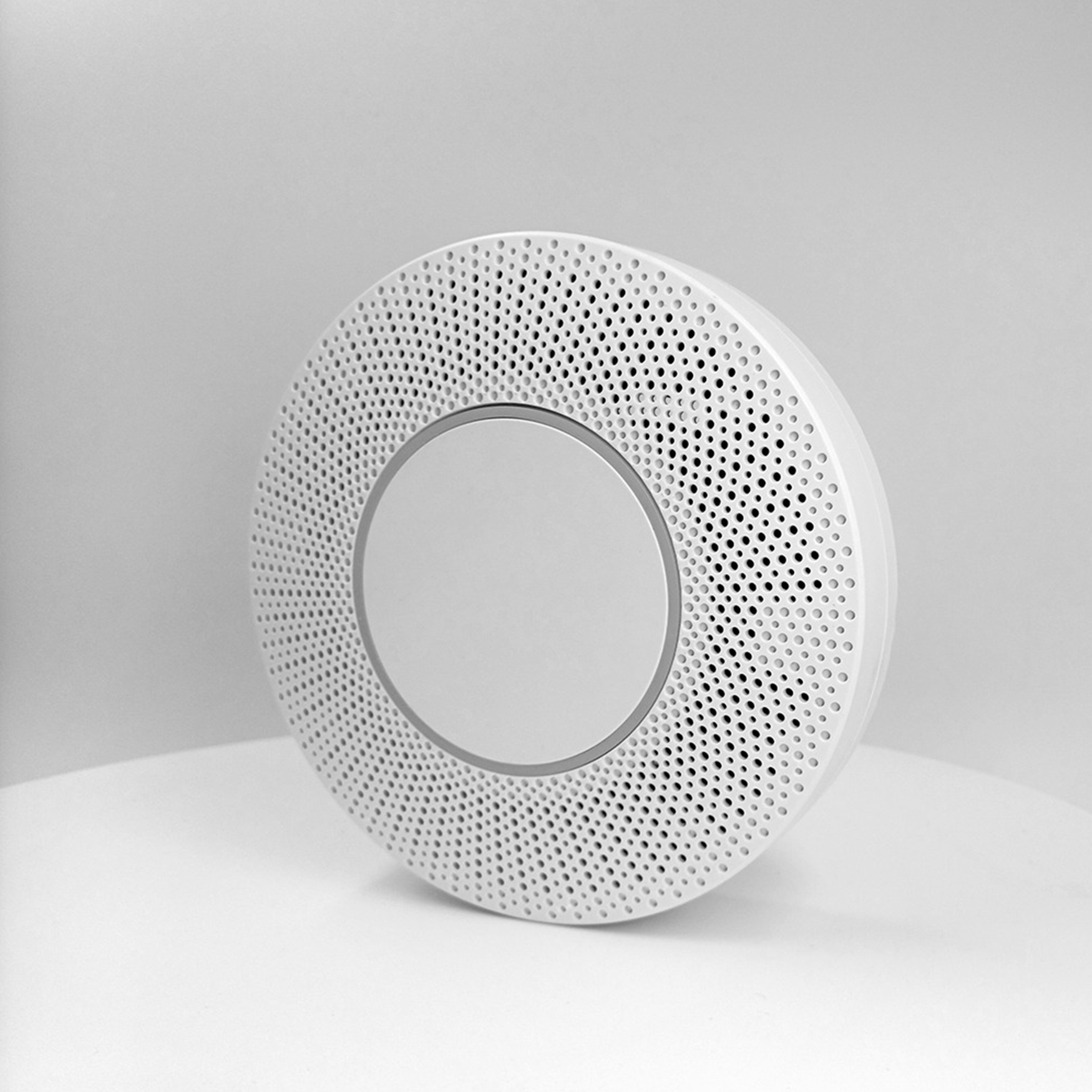
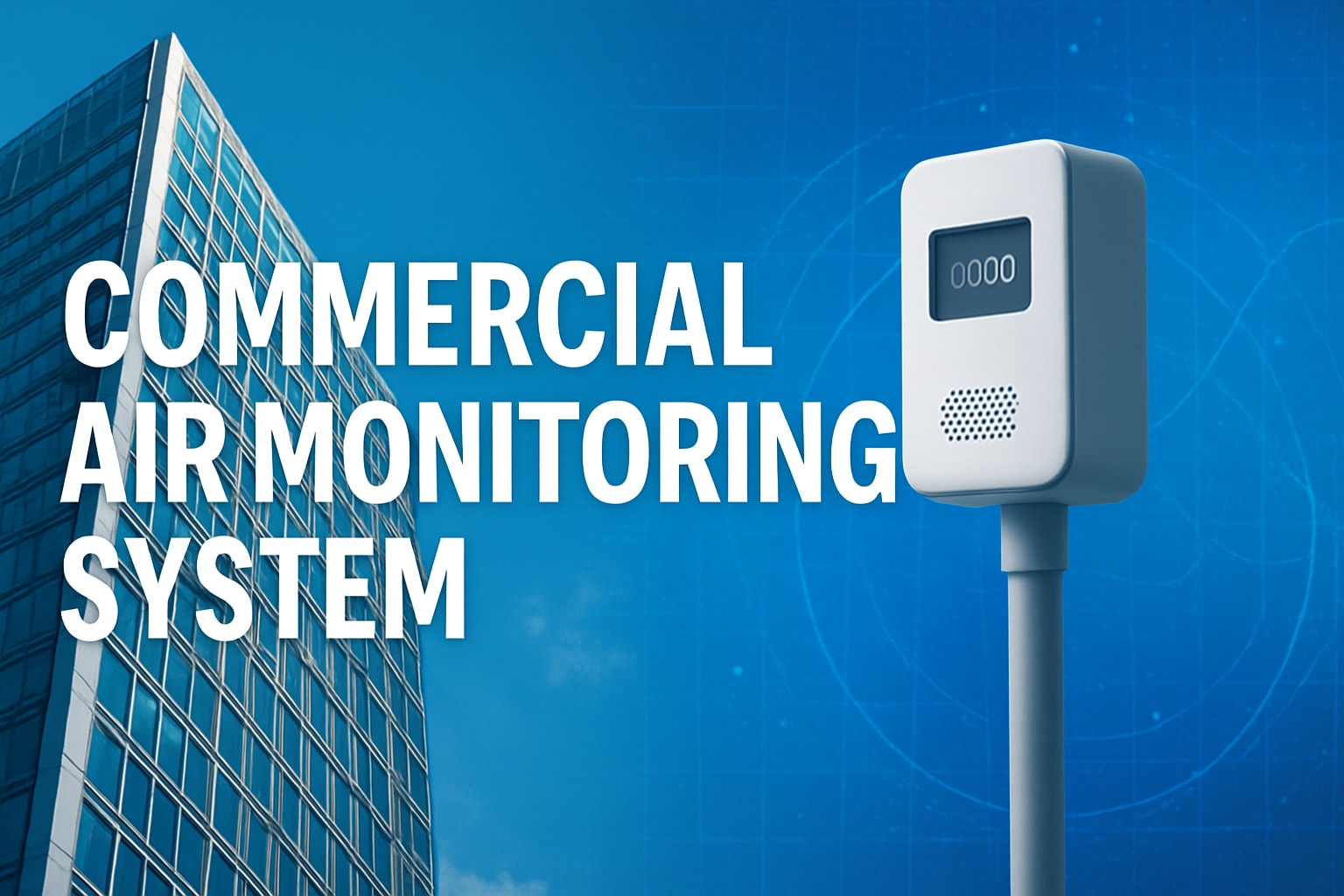


Share:
Air Quality Monitoring System: The Essential Guide 2025
Vape Sensor for Offices: The Essential Guide for 2025